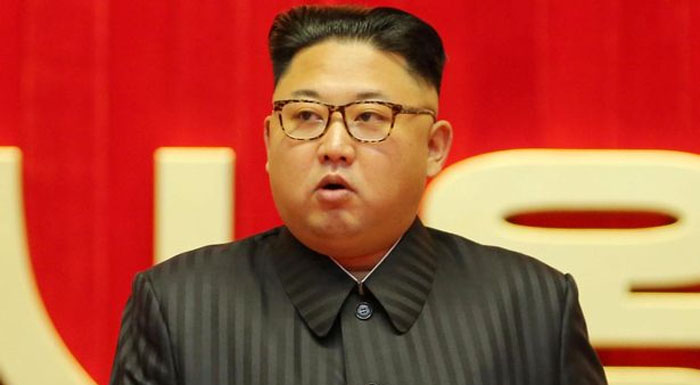
Japan said the ICBM landed in its exclusive economic zone, and the United States and South Korea staged snap joint air drills on Sunday in response.
Pyongyang said the Korean People’s Army (KPA) conducted Monday’s drill in retaliation for those US-South Korean exercises, blaming the allies for the deteriorating security situation, according to a report by state media outlet KCNA.
“Through today’s firing drill with the involvement of super-large multiple rocket launchers, the tactical nuclear attack means, the KPA demonstrated its full readiness to deter and will to counter” the joint air drills, KCNA said.
The rocket launchers were powerful enough to “reduce to ashes the enemy’s operational airfield”, it added.
The South Korean military said it detected the launch of two short-range ballistic missiles on Monday at 0700-0711 (2200-2211 GMT Sunday). One travelled 390 kilometres (240 miles) and the other 340 kilometres, before they landed in the East Sea — the body of water also known as the Sea of Japan.
It described the launches as “a serious provocation that undermines peace and stability on the Korean peninsula”, and called on North Korea to stop “immediately”.
The UN Security Council will hold a meeting to discuss the situation on Tuesday.
North Korean leader Kim Jong Un’s powerful sister warned the country was closely monitoring Washington and Seoul’s moves to deploy more US strategic assets to the region, vowing “corresponding counteraction” if deemed necessary.
“The frequency of using the Pacific as our firing range depends upon the US forces’ action character,” Kim Yo Jong said in a statement published by KCNA.
– ‘Surprise’ drill –
Pyongyang said its Saturday ICBM launch was a “surprise” drill that demonstrated North Korea’s capacity to carry out a “fatal nuclear counterattack”.
Such claims intend to demonstrate, in the face of international scepticism, “not only the development of strategic and tactical nuclear forces but also the operational capability to use them”, said Leif-Eric Easley, a professor at Ewha University in Seoul
The sanctions-busting launch was widely condemned, including on Monday by UN Secretary-General Antonio Guterres, who called on Pyongyang to cease “provocative actions”.
North Korea gave its soldiers an “excellent mark” for carrying out the “sudden launching drill” on Saturday, but South Korean analysts pointed out that the estimated nine hours between the order and the launch was not particularly rapid.
Kim Yo Jong dismissed such criticism on Monday as “a bid to undervalue the preparedness of the DPRK missile forces”, she said, using North Korea’s official name.
Hong Min of the Korea Institute for National Unification told AFP that the strong reaction was part of a pattern of North Korea pushing back against any external analysis of its ICBM capabilities.
The angry retort “shows the North really cares about delivering a message that it is capable of hitting the US mainland”, he said.
The North Korean weapons launches came ahead of a joint US-South Korean tabletop exercise this week aimed at improving their response in the event of a nuclear attack by Pyongyang.
North Korea warned last week of an “unprecedentedly” strong response to the planned joint drills by Seoul and Washington, which it describes as preparations for war.
Relations between the two Koreas are at one of their lowest points in years, after North Korea declared itself an “irreversible” nuclear state and leader Kim called for an “exponential” increase in weapons production, including tactical nuclear weapons.





